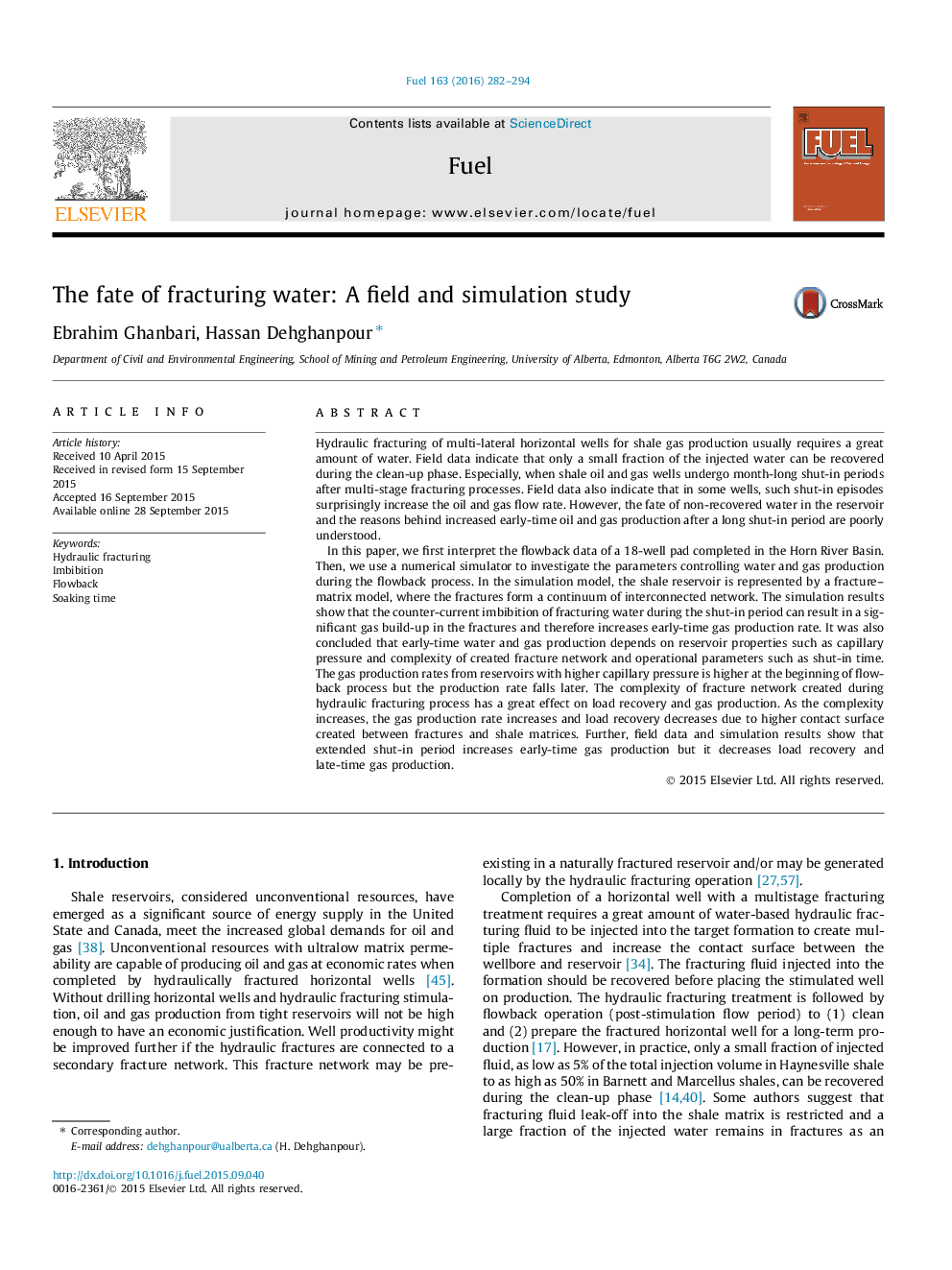| کد مقاله | کد نشریه | سال انتشار | مقاله انگلیسی | نسخه تمام متن |
|---|---|---|---|---|
| 205512 | 461111 | 2016 | 13 صفحه PDF | دانلود رایگان |
Hydraulic fracturing of multi-lateral horizontal wells for shale gas production usually requires a great amount of water. Field data indicate that only a small fraction of the injected water can be recovered during the clean-up phase. Especially, when shale oil and gas wells undergo month-long shut-in periods after multi-stage fracturing processes. Field data also indicate that in some wells, such shut-in episodes surprisingly increase the oil and gas flow rate. However, the fate of non-recovered water in the reservoir and the reasons behind increased early-time oil and gas production after a long shut-in period are poorly understood.In this paper, we first interpret the flowback data of a 18-well pad completed in the Horn River Basin. Then, we use a numerical simulator to investigate the parameters controlling water and gas production during the flowback process. In the simulation model, the shale reservoir is represented by a fracture–matrix model, where the fractures form a continuum of interconnected network. The simulation results show that the counter-current imbibition of fracturing water during the shut-in period can result in a significant gas build-up in the fractures and therefore increases early-time gas production rate. It was also concluded that early-time water and gas production depends on reservoir properties such as capillary pressure and complexity of created fracture network and operational parameters such as shut-in time. The gas production rates from reservoirs with higher capillary pressure is higher at the beginning of flowback process but the production rate falls later. The complexity of fracture network created during hydraulic fracturing process has a great effect on load recovery and gas production. As the complexity increases, the gas production rate increases and load recovery decreases due to higher contact surface created between fractures and shale matrices. Further, field data and simulation results show that extended shut-in period increases early-time gas production but it decreases load recovery and late-time gas production.
Journal: Fuel - Volume 163, 1 January 2016, Pages 282–294
